Exploring the December Birthstone: Turquoise Insights
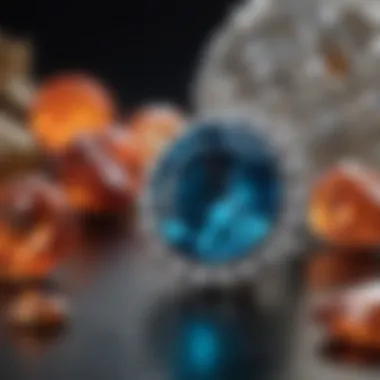

Intro
The birthstone for December 20th is turquoise, a gemstone that transcends mere ornamentation. This article offers a comprehensive examination of turquoise, focusing on its properties, historical journey, and cultural relevance. By analyzing its unique characteristics and potential metaphysical benefits, we aim to provide a valuable resource for gemstone enthusiasts and collectors.
Gemstone Overview
Definition and Characteristics
Turquoise is a blue-to-green mineral that has captivated humans for centuries. Its appealing color and smooth texture make it a popular choice for jewelry and decorative items. Turquoise often contains veining, which adds to its charm. The color usually ranges from sky blue to greenish shades, influenced by the presence of elements like copper and iron.
Classification of Gemstones
Gemstones can be broadly classified into precious and semi-precious categories. Turquoise is generally considered a semi-precious stone; however, its rarity in high-quality forms elevates its status among collectors. Furthermore, turquoise can be categorized based on its geographical origins, such as Persian, American, and Chinese turquoise. Each type carries its distinct appeal and value.
Properties of Gemstones
Physical Properties
Turquoise is a relatively soft gemstone, typically registering 5 to 6 on the Mohs hardness scale. Its structure is often cryptocrystalline, meaning it has a meshed crystal formation that contributes to its unique appearance. Additionally, turquoise is opaque, lacking the transparency found in many other stones.
Chemical Properties
Chemically, turquoise is a hydrous phosphate of copper and aluminum. The formula for turquoise is CuAl6(PO4)4(OH)8·4O, which indicates its complexity. Knowing this can enhance appreciation among collectors, as it shows how varied mineral compositions influence not just aesthetics but also durability.
"Turquoise is not just a rock; it is a narrative that connects us to history and culture."
Understanding these properties offers a lens through which to view turquoise, enriching both personal and collective appreciation.
This section sets the stage for further exploration into the captivating history and cultural significance of turquoise.
Prelims to December Birthstones
The study of birthstones captures the imagination and holds significant cultural relevance. December, often associated with festive celebrations, brings forth its own unique gemstone—turquoise. This stone has a rich history and profound meaning. Understanding the December birthstones extends beyond mere aesthetics; it is about tapping into the stories and symbolism that surround them. For individuals born in this month, these stones often represent a connection to personal identity and heritage.
Overview of Birthstones
Birthstones serve as more than decorative items; they are infused with meanings and traditions. Each month is linked with a particular gemstone, believed to convey certain traits to its wearer. For December, turquoise stands out due to its vibrant hue and historical significance. Traditionally, birthstones have been thought to offer protection and blessings. This tradition is still prominent today, providing individuals with a sense of comfort and connection to their birth month.
Significance of Birthstones in Culture
Across various cultures, birthstones are celebrated and revered. In many societies, these gems hold significant traits linked to astrology or folklore.
- Personal Identity: Birthstones often act as a form of self-expression, allowing individuals to display their unique connection to their birth month.
- Gifts and Symbolism: Birthstones serve as ideal gifts, particularly during celebratory occasions like birthdays or anniversaries. The gemstones encapsulate personal significance, making them meaningful tokens.
- Healing and Protection: Many cultures regard specific birthstones as protective talismans. They are believed to ward off negativity and promote wellness.
The importance of understanding birthstones is evident as it opens pathways to historical traditions and cultural customs that enrich our connection to gems like turquoise. By exploring their stories, individuals gain a deeper appreciation for the jewels that signify their birthdays.
The Birthstone for December 20th
The birthstone for December, specifically for the date of December 20th, is turquoise. Understanding the significance of turquoise is essential for those born in this month. This gemstone has a rich history and wide-ranging cultural implications that give it importance beyond its aesthetic appeal. Recognizing the unique characteristics of turquoise allows both enthusiasts and collectors to appreciate its beauty and significance.
Turquoise has long been associated with various qualities such as tranquility, protection, and healing. These attributes appeal to individuals who seek personal significance in their birthstones. Furthermore, the gemstone's vibrant hues and unique matrix patterns allow it to stand out in the world of gemstones. This distinctiveness serves as a conversation starter and enhances its desirability in jewelry design.
Several aspects should be considered when it comes to turquoise. Its history and origin contribute to its value. Additionally, understanding how to identify quality turquoise can significantly impact both collectors and jewelry designers. By exploring the properties and significance of turquoise, one can gain a deeper connection to this birthstone, making it more than just an ornament, but rather a representation of individuality.
Identifying the December Birthstone
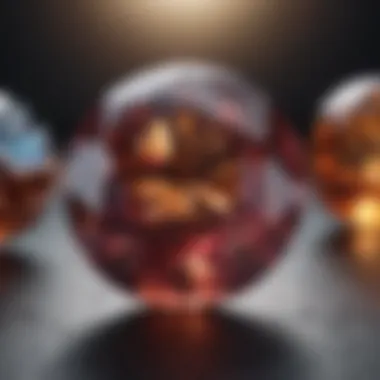
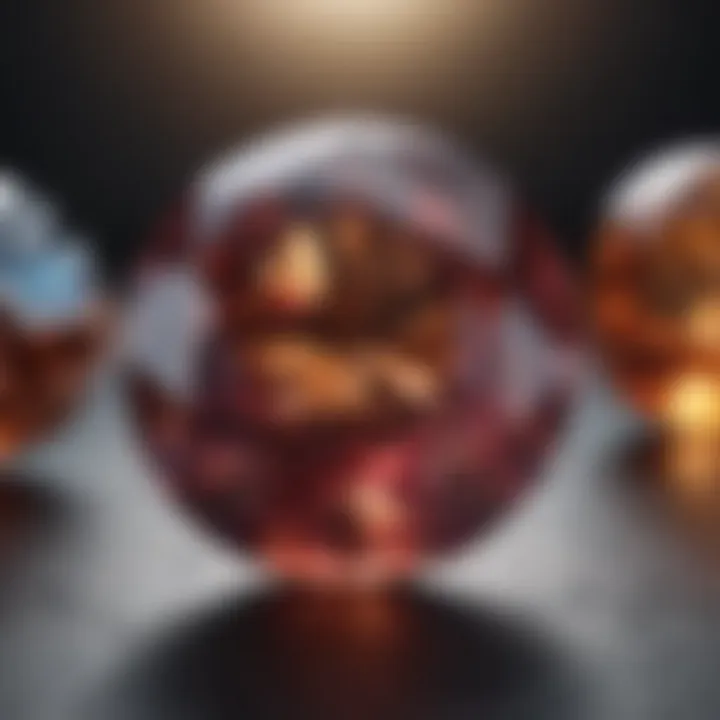
Identifying turquoise requires some knowledge of its properties. This gemstone is typically found in shades of blue to green, with more patterns and variegation than many other stones. Its unique color comes from the presence of copper, aluminum, and phosphorus. When searching for turquoise, look for the following characteristics:
- Color: The ideal shade ranges from sky blue to green. Patterns and inclusions, sometimes called a "matrix", can also vary, leading to a unique appearance.
- Texture: A smooth texture is generally desirable, although some rough stones may have a raw appeal.
- Hardness: Turquoise usually falls between 5 and 6 on the Mohs scale of mineral hardness, which indicates its moderate durability.
Additionally, verifying the authenticity of turquoise is crucial. Many stones on the market are treated or dyed to enhance their color. To ensure quality, one may consider using reputable sources or consulting with a gemologist.
Turquoise: A Comprehensive Overview
Turquoise is not only celebrated for its beauty but also for its historical importance. This gemstone has been cherished for thousands of years, finding its way into numerous cultures across the globe. Native American tribes have a long-standing tradition of using turquoise in jewelry and ceremonial artifacts, often viewing it as a symbol of protection and good fortune.
In modern times, turquoise remains popular among jewelry designers and enthusiasts alike. Its versatility allows it to be crafted into necklaces, bracelets, rings, and more. The gemstone also fuses well with various metals and other stones, enhancing its appeal in diverse jewelry styles.
Moreover, turquoise can sometimes be confused with similar stones, such as chrysocolla or howlite, due to their color similarities. Therefore, awareness of the gemstone’s distinctive features is critical in appreciating its beauty fully. Collectors might find nuances in quality and appearance, as every piece of turquoise carries a story through its formation and journey.
"Turquoise is more than just a color; it is a connection to history and culture like none other."
Historical Context of Turquoise
Understanding the historical context of turquoise not only enriches the appreciation of this gemstone but also illustrates its place in human culture and society. Turquoise has maintained significance since ancient times, valued for its unique characteristics and beauty. This section explores the origins of turquoise and how cultural narratives have shaped its identity through various epochs, influencing contemporary perspectives.
Origin and Mining of Turquoise
Turquoise's origins can be traced back thousands of years. It often forms in arid regions, typically within volcanic and sedimentary rock types. The most notable deposits include those found in Iran, the southwestern United States, and parts of China. Each location imparts unique qualities to the stone, influencing its hue and other features.
Mining turquoise is an endeavor steeped in tradition. For example, in the Navajo culture, the process is not just a means of hunting gems; it embodies a spiritual journey. The extraction of turquoise has evolved from small-scale operations driven by local artisans to more significant industrial mining activities, particularly in the United States. While this development has made turquoise more accessible, it has raised concerns about ethical sourcing and environmental impact. It is essential for gemstone enthusiasts to be aware of these issues as they seek quality pieces for their collections.
Cultural Significance Through History
The cultural significance of turquoise cannot be overstated. Ancient civilizations revered it, viewing the stone as a bridge between the earthly and the divine. In Mesopotamia, turquoise adorned royal jewelry, symbolizing status and power. Similarly, ancient Egyptians utilized turquoise in burial artifacts, believing it provided protection in the afterlife.
Across the Americas, Indigenous cultures also embraced turquoise, embedding it deeply in their spiritual practices. The Pueblo peoples and the Navajo decorated their ceremonial items with turquoise, linking it to the skies and fertility. Its symbolic resonance is further pronounced in various rituals and artifacts, affirming its role as a source of power and integration into their identities.
"Turquoise has served not merely as an adornment but as a crucial element of cultural expression, encapsulating history, identity, and spiritual beliefs."
In modern times, while the aesthetic appeal of turquoise remains, there is a renewed interest in its historical narratives. Contemporary jewelry designers are increasingly paying homage to the stone's past, drawing from traditional craftsmanship while infusing modern sensibilities into their creations. This blend ensures that turquoise continues to be a vital part of personal expression and cultural representation today. Its longstanding journey from ancient resource to modern treasure highlights the gemstone's rich tapestry and ongoing relevance in artistry and personal adornment.
Physical Properties of Turquoise
The physical properties of turquoise play a significant role in understanding its appeal and application. These properties not only inform jewelers and collectors about its value but also offer insights into how the stone interacts with light and wear. By exploring the specific characteristics of turquoise, readers can better appreciate its uniqueness and the care it requires.
Chemical Composition and Structure
Turquoise is a hydrous phosphate of copper and aluminum, which gives it its distinct color and stability. Its chemical formula is generally written as CuAl6(PO4)4(OH)8·4O. This indicates a fascinating combination of elements that contributes to the gemstone's structural integrity and color. The turquoise structure consists of a crystalline pattern, specifically a turquoise family of minerals known for their monoclinic symmetry.
Understanding the chemical composition of turquoise not only highlights its beauty but also its vulnerabilities to environmental factors. For example, high levels of acidity or changes in humidity can affect its overall appearance. Therefore, knowing its chemistry helps collectors make informed choices about preservation.
Color Variations of Turquoise
The color of turquoise can vary greatly, making it one of the most diverse and sought-after gemstones. Common hues include shades of blue, green, and even yellowish-green. The variation in color is primarily due to the presence of different elements during its formation. For instance, higher copper content leads to a rich blue color, while increased iron results in a more greenish hue.
Some notable color variations include:
- Bright blue, often seen in Persian turquoise.
- Greenish-blue, typical of many American sources.
- Yellowish-green, which can occur in lower quality turquoise.
These color differences can contribute to the value of the stone, making it an important factor for collectors and jewelers.
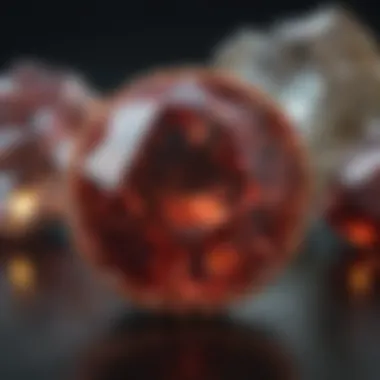
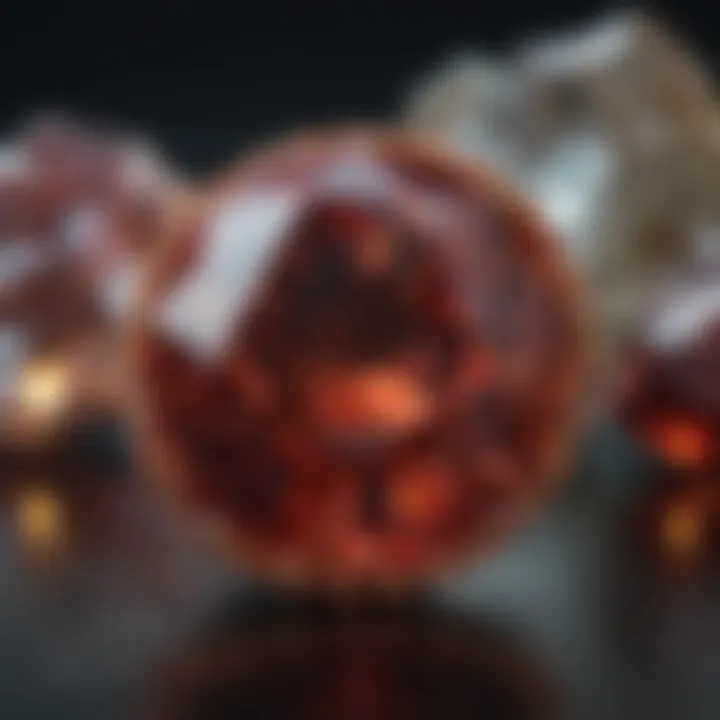
Hardness and Durability
Turquoise ranks between 5 and 6 on the Mohs hardness scale, indicating that it is relatively soft compared to other gemstones. This rating also means that turquoise can be scratched by harder materials, raising considerations for everyday wear. Jewelers often combine turquoise with harder stones to create durable jewelry designs.
Some factors that influence the durability of turquoise include:
- Location of origin: Turquoise from more established sources, like the Persian mines, is often denser and more stable.
- Treatment: Many turquoise pieces undergo stabilization processes, which help enhance their hardness and resistance to wear.
- Environment: Care should be taken to keep turquoise away from strong chemicals and excessive moisture, which can damage its surface.
Overall, understanding the hardness and durability of turquoise is essential for anyone involved in its use or collection. Recognizing its limitations helps in making educated decisions about its care and the type of jewelry that is suitable for various lifestyles.
"Knowing the physical properties of turquoise is essential for maintaining its beauty and longevity. By understanding how to care for and appreciate this unique gemstone, both enthusiasts and jewelers can ensure its charm endures through time."
For further exploration of turquoise's history and significance, you can visit Wikipedia or discover community insights on platforms like Reddit.
Metaphysical Properties of Turquoise
Turquoise has long been recognized not merely as a beautiful gem but also for its profound metaphysical properties. Over centuries, cultures around the world have attributed various benefits to turquoise, stemming from its unique composition and striking appearance. This section delves into the healing attributes and symbolism associated with this captivating stone, elucidating its significance in a broader metaphysical context.
Healing Attributes of Turquoise
Many believe that turquoise possesses inherent healing qualities, making it a favored stone among holistic practitioners. The stone is thought to neutralize extremes and bring a sense of calm, encouraging harmony and balance. It is often said to promote emotional well-being and foster sincere communication. The cooling energy of turquoise can be especially beneficial in times of stress or anxiety, assisting the wearer in finding clarity.
Some specific healing attributes attributed to turquoise include:
- Absorbing negative energy: It is said to ward off unwanted influences, protecting the wearer from harmful energies.
- Enhancing overall health: Some practitioners use turquoise to support the immune system and promote healing in body tissues.
- Strengthening the spirit: This gemstone is associated with renewal and vitality, helping individuals reconnect with their true selves.
Symbolism of Protection and Serenity
Turquoise embodies rich symbolism within various cultures. Historically, it has been viewed as a stone of protection, believed to safeguard the wearer from harm. Ancient civilizations, such as the Egyptians and Native Americans, revered turquoise for its protective qualities, often embedding it in ceremonial artifacts and jewelry.
In addition to protection, turquoise is also closely linked to a sense of serenity. Its tranquil color is thought to evoke a state of peace and calm. This dual symbolism of protection and serenity makes turquoise a powerful ally for those seeking respite from life's challenges.
"Turquoise is a celebrated gem that bridges the physical and spiritual realms, offering protection to those who seek it."
To sum it up, the metaphysical properties of turquoise underscore its role as a significant gemstone for healing and protection, appreciated by those interested in its deeper meaning beyond aesthetics. Whether you are a gemstone enthusiast or simply drawn to its beauty, understanding these properties enhances the overall appreciation of this ancient stone.
Choosing and Caring for Turquoise
Selecting and caring for turquoise is crucial for anyone interested in this unique gemstone. The quality of turquoise varies widely due to its composite nature and methods of treatment. Expertise in recognizing high-quality pieces can greatly enhance the value and enjoyment of your collection. Furthermore, proper care ensures that your turquoise maintains its vibrant color and structural integrity over time.
Tips for Selecting Quality Turquoise
When choosing turquoise, several factors are important to consider. First, examine the color. The most prized turquoise displays a rich, deep blue hue, often with variations that hint at a greenish tint. This color is indicative of high quality. Ideally, you should seek pieces that are consistently colored without too many inclusions or discolorations.
Second, evaluate the matrix. Natural turquoise comes with a host of matrix patterns, which can impact its beauty and value. Look for stones where the matrix is less prominent; less matrix usually correlates with higher value.
Additionally, be aware of the treatments used on the stone. Turquoise is often dyed or stabilized to enhance its appearance. While these processes are common, they can affect the longevity of the stone. Thus, inquire regarding the treatments applied before making a purchase to ensure transparency.
Key considerations when selecting turquoise:
- Color consistency: Aim for a balanced, vibrant look.
- Matrix presence: Less matrix often signifies higher quality.
- Treatment history: Understand any modifications done to the stone.
Maintenance and Care Guidelines
Caring for turquoise requires attention and very proper handling due to its relatively soft nature. Turquoise ranks between 5 and 6 on the Mohs hardness scale, making it more susceptible to scratches and damage compared to other gems. Therefore, following specific care guidelines is essential.
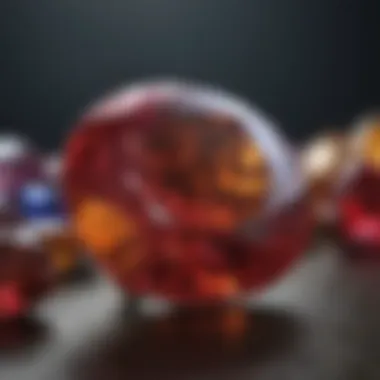
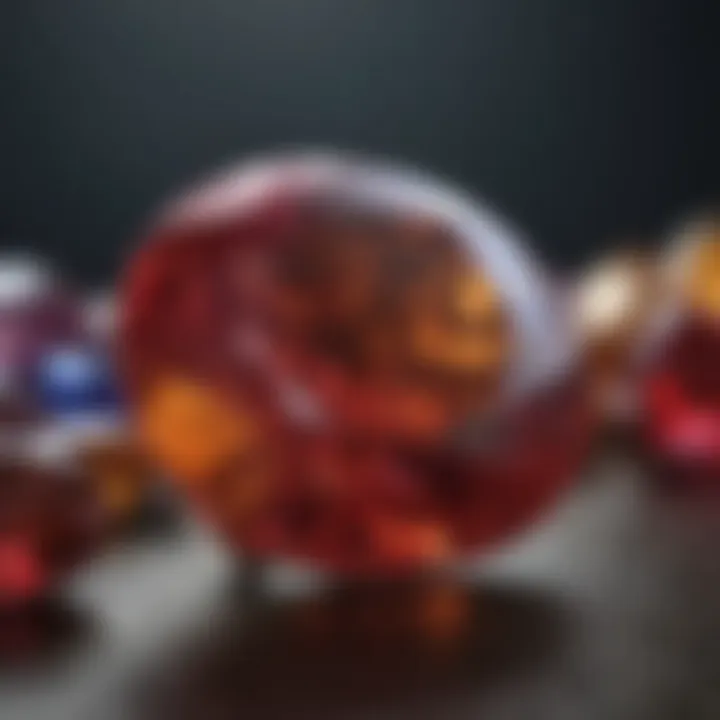
First, avoid exposure to harsh chemicals. Substances found in household cleaners, perfumes, and even some lotions can damage the surface of turquoise. Always apply these products before putting on your jewelry to minimize potential harm.
Next, store turquoise pieces properly. Ideally, each piece should be kept in a soft pouch or wrapped in a cloth to avoid scratches from other stones. Keeping them in a cool, dry place also helps maintain the integrity of the stone.
Finally, clean your turquoise gently. A soft, damp cloth is usually sufficient to wipe away dirt and oils. Avoid using ultrasonic cleaners or steam treatments, as these can be too abrasive.
Proper care and attention to detail can significantly extend the life of your turquoise treasures.
Essential care guidelines include:
- Avoid chemicals: Protect your stone from harmful substances.
- Store safely: Use soft pouches to avoid scratches.
- Gentle cleaning: Use damp cloths for maintenance.
Turquoise in Modern Jewelry and Fashion
Turquoise has retained its allure as a favored gemstone in modern jewelry and fashion. This popularity persists due to the stone's vibrant colors and intriguing history. Jewelry designers and consumers alike appreciate turquoise not only for its beauty but also for what it represents. It is often associated with healing and protection, making it a thoughtful addition to many pieces. Its unique coloration and widespread availability allow for diverse styles, accommodating many tastes and preferences.
Design Trends Incorporating Turquoise
In recent years, design trends have evolved to feature turquoise prominently in various formats. Jewelry collections often highlight natural and raw forms of turquoise, celebrating its authenticity. The juxtaposition of polished stones and unrefined edges creates a compelling visual contrast. Furthermore, various settings come into play:
- Bohemian Styles: Turquoise complements bohemian aesthetics with layered necklaces and stacked bracelets.
- Minimalist Designs: Simple turquoise rings or stud earrings offer a touch of color without overwhelming the look.
- Statement Pieces: Larger pieces with intricate details attract attention and become conversation starters.
As the trend for individualistic and personalized jewelry rises, turquoise stands as a versatile choice. It fits seamlessly into both casual and formal settings, appealing to a broad audience.
Cultural Representations in Contemporary Art
Turquoise's impact extends beyond jewelry into contemporary art. Artists utilize this gemstone's rich history and cultural associations to make powerful statements. In many cultures, turquoise is regarded as a symbol of wisdom and tranquility, inviting artists to explore these themes in their work. Contemporary pieces often integrate turquoise in various forms, including:
- Sculptures: Many sculptures incorporate turquoise elements, celebrating their natural beauty and cultural heritage.
- Paintings: The color of turquoise features heavily in mixed media art, evoking emotions and exploring identity.
Overall, the representation of turquoise in art enriches cultural dialogue, connecting past and present. Artists use the stone not just for its visual appeal but to convey deeper messages about heritage and spirituality. This ongoing evolution ensures that turquoise remains relevant in both jewelry fashion and contemporary artistry, establishing a strong narrative for future generations.
The Future of Turquoise in Gemology
The future of turquoise in gemology holds significant importance as the landscape of gemstone sourcing and treatment continues to evolve. Turquoise has always been treasured not just for its remarkable beauty but also for its rich cultural history. However, increasing demand and environmental concerns are challenging current practices in sourcing and treatment. Understanding these dynamics is essential for gem enthusiasts, jewelry designers, and collectors, as it shapes the ethical and sustainable landscape of this popular gemstone.
Sustainability and Ethical Sourcing
Sustainability has become a pressing issue in the gemstone industry. For turquoise, this is particularly relevant due to the depletion of natural sources and the impact of mining on local environments. Ethical sourcing refers to obtaining gemstones in a manner that is considerate of the surroundings and communities involved in the extraction process.
- Environmental Impact: Turquoise mining can result in landscape destruction, water depletion, and habitat loss. Sustainable practices aim to minimize these effects through responsible mining methods.
- Community Welfare: When sourced ethically, turquoise mining can benefit local communities through job creation and support for local economies. Companies committing to fair labor practices enhance the positive impact on workers’ lives.
- Certification Initiatives: Organizations are emerging to certify ethically sourced turquoise. This gives consumers confidence in their purchases. Knowing the origin of turquoise can also add to its value and appeal.
“Sustainable gemstones are not just a trend, but a necessity for future generations.”
Incorporating sustainable practices not only preserves resources for the future but also aligns with consumers' growing preference for ethically obtained materials.
Advancements in Turquoise Treatment Techniques
Advancements in treatment techniques for turquoise are crucial to maintaining its allure and value. As awareness of quality and authenticity grows among consumers, gem professionals are looking for ways to enhance the natural stone while preserving its integrity.
- Polymer Treatments: One common treatment is the use of polymers to stabilize softer turquoise. This process can enhance color and durability, enabling it to be used in various jewelry applications. While this may improve visual appeal, consumers should be aware of these treatments as they affect overall gemstone integrity.
- Color Enhancement: Techniques for enhancing the natural color of turquoise through processes like dyeing are also prevalent. While it can make the stone more vibrant, it is vital for buyers to differentiate between naturally colorful turquoise and treated stones.
- Increased Transparency: As treatment methods advance, transparency about these processes becomes essential. Reputable dealers are providing information about the treatment of turquoise, allowing consumers to make informed decisions about their purchases.
The End
Concluding an exploration of turquoise as the birthstone for December 20th reveals its importance not only as a precious gemstone but also as a cultural and historical artifact. This article has dissected various facets of turquoise, including its physical properties, historical significance, and metaphysical beliefs. Each aspect contributes to a richer understanding of why this stone is cherished by many.
Recap of Key Takeaways
The exploration uncovered several key points:
- Turquoise holds historical significance across cultures from ancient Egypt to Native American traditions. Its cultural resonance is profound, often symbolizing protection, wisdom, and tranquility.
- The physical characteristics of turquoise, such as its unique color variations and durability, make it suitable for various applications in jewelry and art.
- The modern emphasis on sustainability and ethical sourcing elevates the role of turquoise in contemporary gemstone markets.
Encouraging Further Exploration
For those intrigued by turquoise, there is much more to discover. One may look into the specific mining practices, treatment techniques, or even follow current trends in jewelry that integrate this gemstone. Participating in online communities, visiting local gem shows, or checking resources such as Wikipedia can further enrich one's understanding. Learning more about the interconnectedness of turquoise with our Earth and culture not only deepens appreciation but also encourages responsible consumption of such resources.



